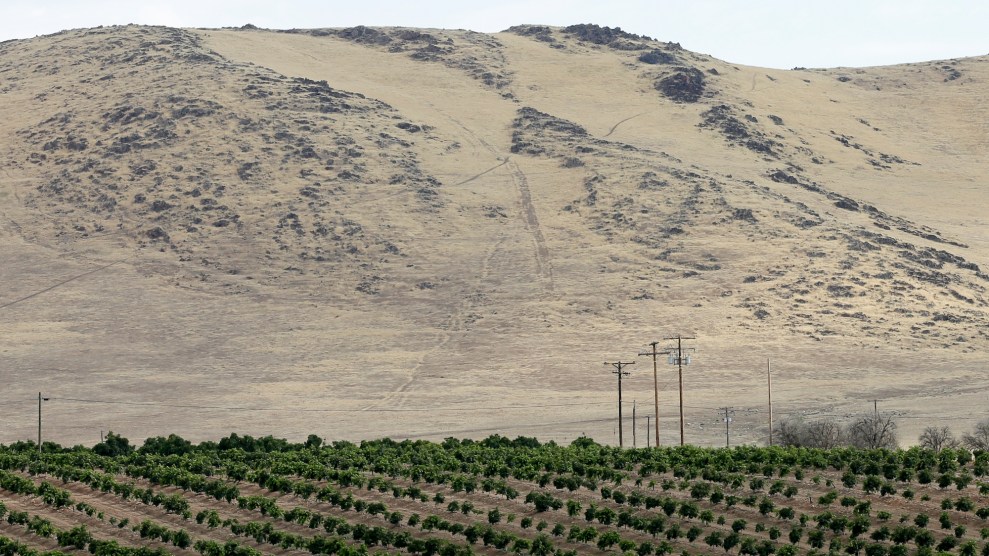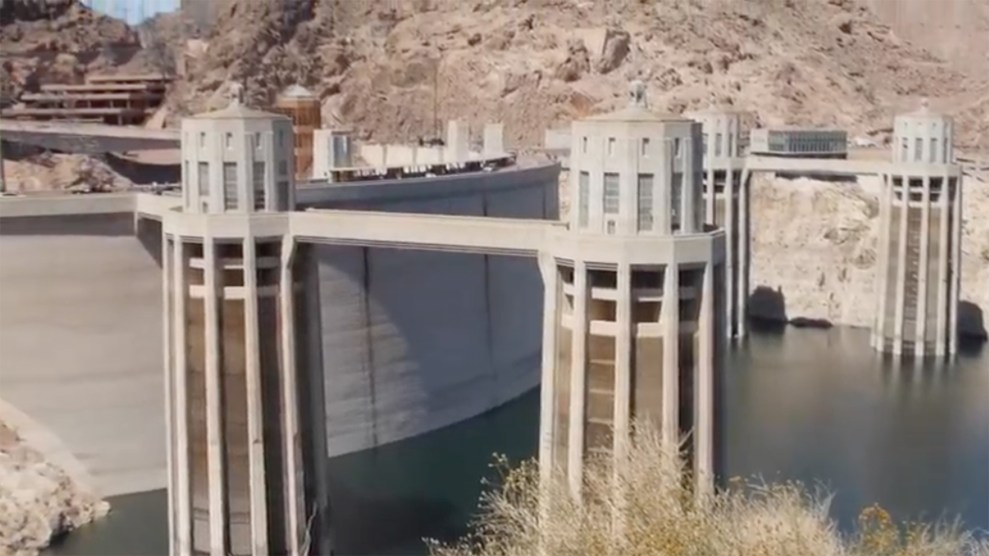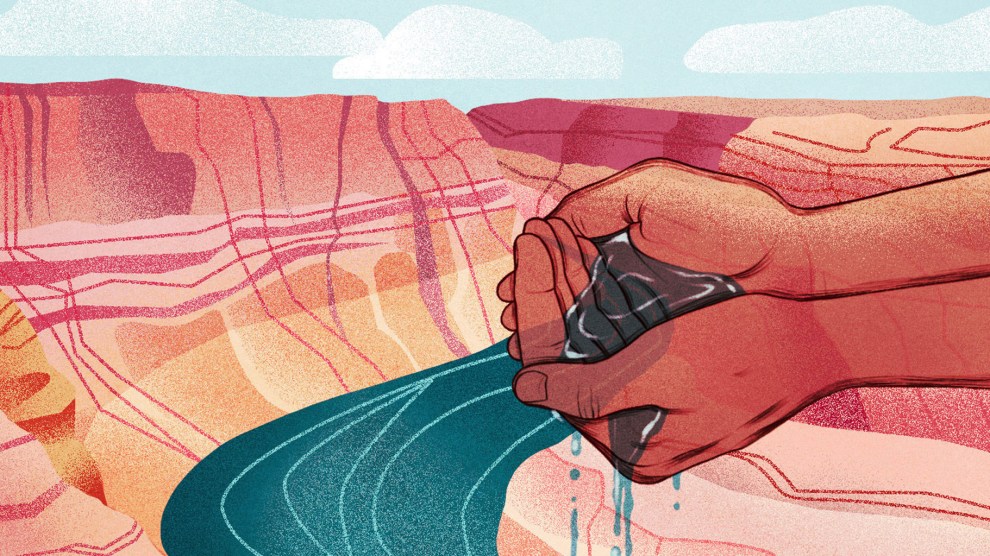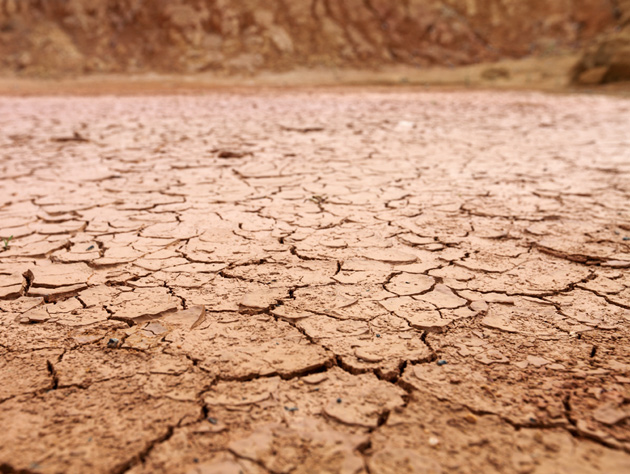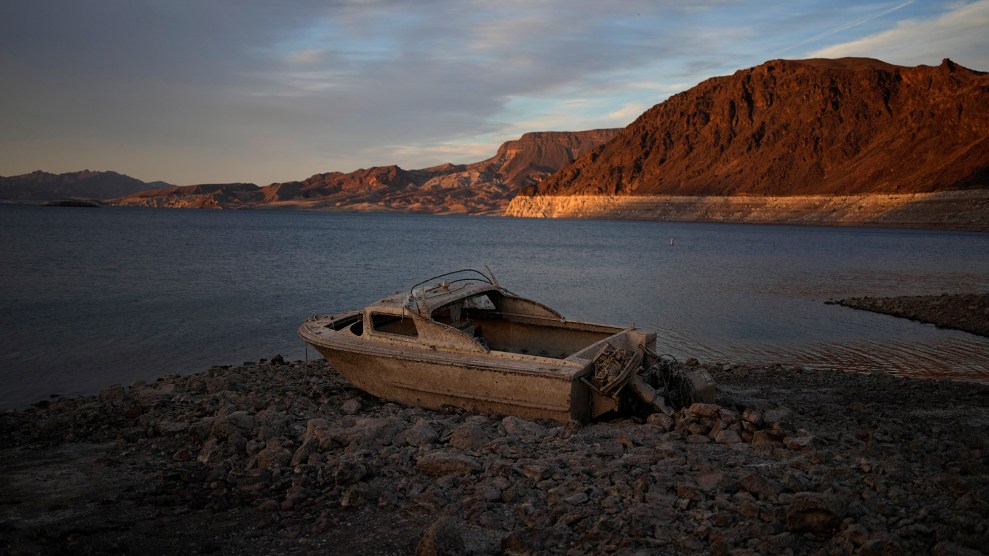
A previously submerged boat photographed at Lake Mead near Boulder City, Nevada, on May 10, hints at the direness of the West's water woes. John Locher/AP
This video story was created by Pattrn and is shared here as part of the Climate Desk collaboration.
One hundred years ago, Western states and Mexico signed a pact to divvy up water from the Colorado River, based on century-old science and historic river flows. How times have changed. Today, 40 million people across seven states rely on the Colorado as their primary water source. But with the river’s flow dwindling, key reservoirs like Lake Mead and Lake Powell running insanely low, and water restrictions getting more intense, battles are raging over who gets this life-giving liquid—and how much they get. Below, our Climate Desk partner Pattrn (an affiliate of The Weather Channel) sketches out this dire situation in about three minutes. Check it out.
